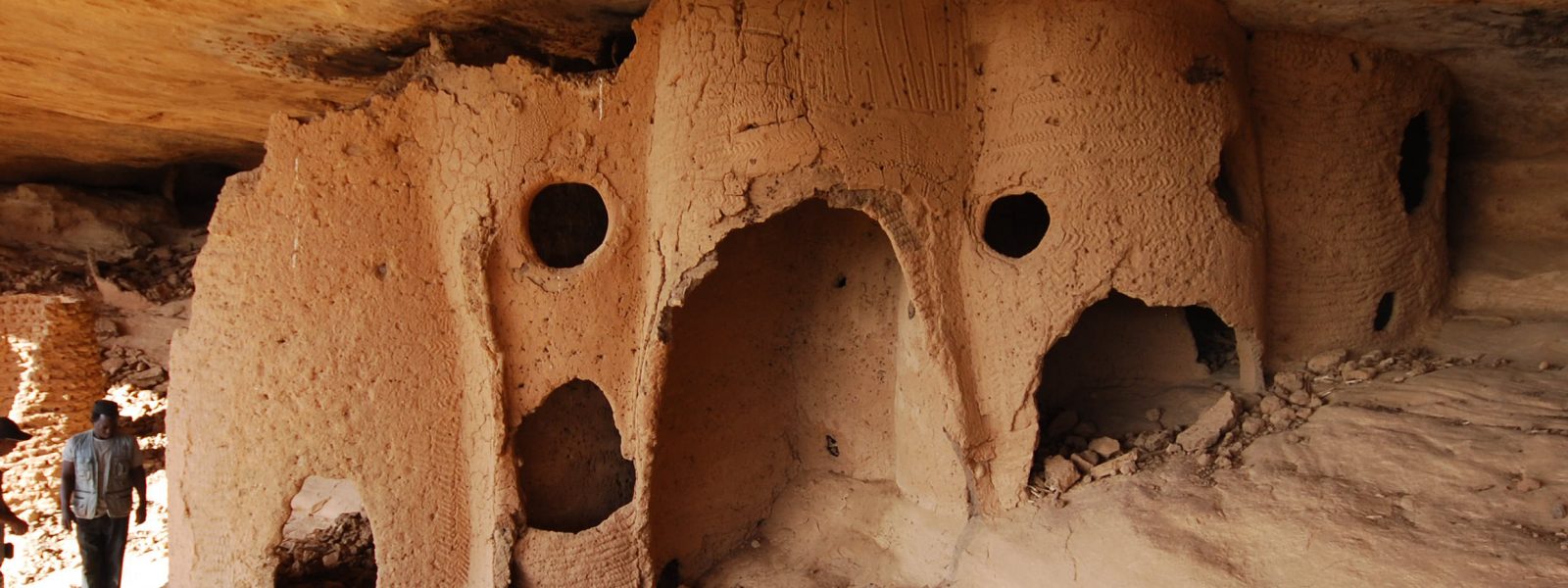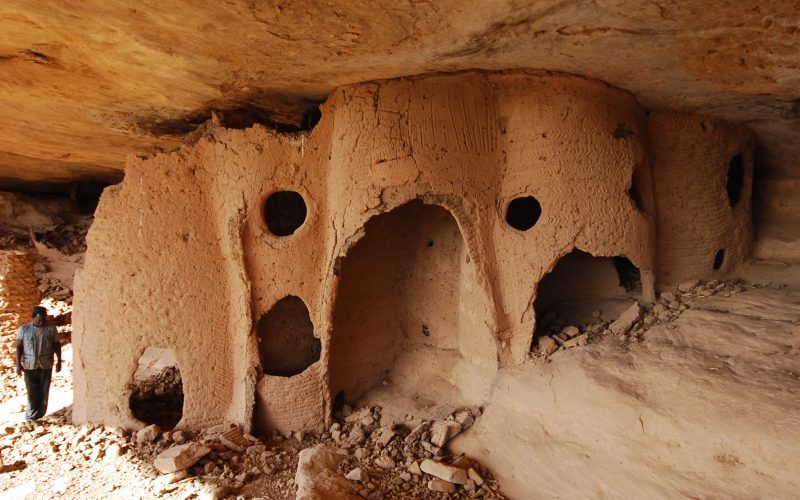
The Toloy cave is an archaeological site, located in a 50 meters wide valley starting near Sangha and running parallely to the Bandiagara Cliff. On the steep walls of the sandstone plateau there are shallow caves, which owe their existence to the infiltration of water into the sandstone. The main one of these rock shelters is the Toloy Cave, which is 43 m long and 13 m wide. This cave contains a group of around 30 coiled clay buildings and varied archaeological material. These constructions were used as granaries, but later on they had a secondary use as tombs.
According to the results of the research carried out in 1970 by a Dutch team, the buildings date back to between the fifth century B.C. and the second century A.D. They are the oldest cultural remains not only in the Sangha region, but also in sub-Saharan West Africa. Consequently, the Toloy cave has an important historical and archaeological value, as a repository of information and knowledge of humankind.


The construction techniques of these circular coiled clay buildings of Toloy are unique. Some of the structures are characterized by spindle-shaped clay coils with fingerprints, while others show a wide circular clay coil.
The documentation takes into consideration the previous researches, from 1964 until today. Using historic photographs as an important resource for the study and documentation of the Toloy Cave, we are able to understand better the building technique and the damages to the clay coiled buildings. The survey of photographs is also useful to monitor the site and assist in visual reconstruction of the previous appearance of the buildings.




